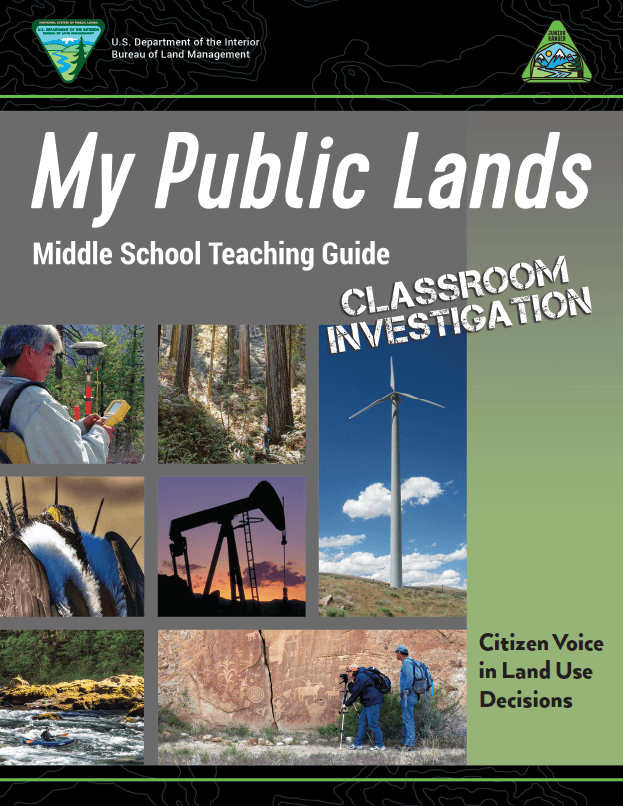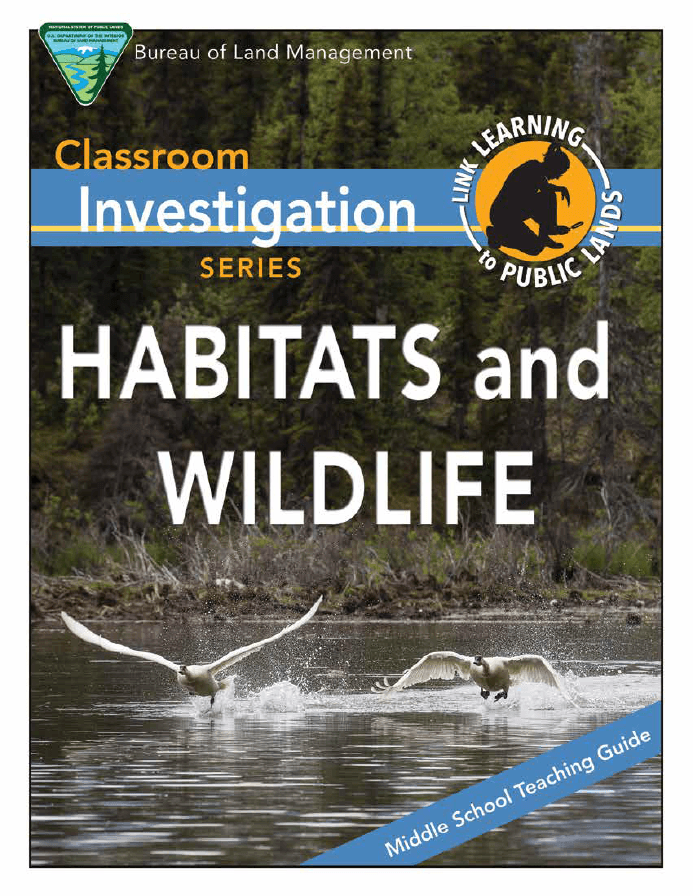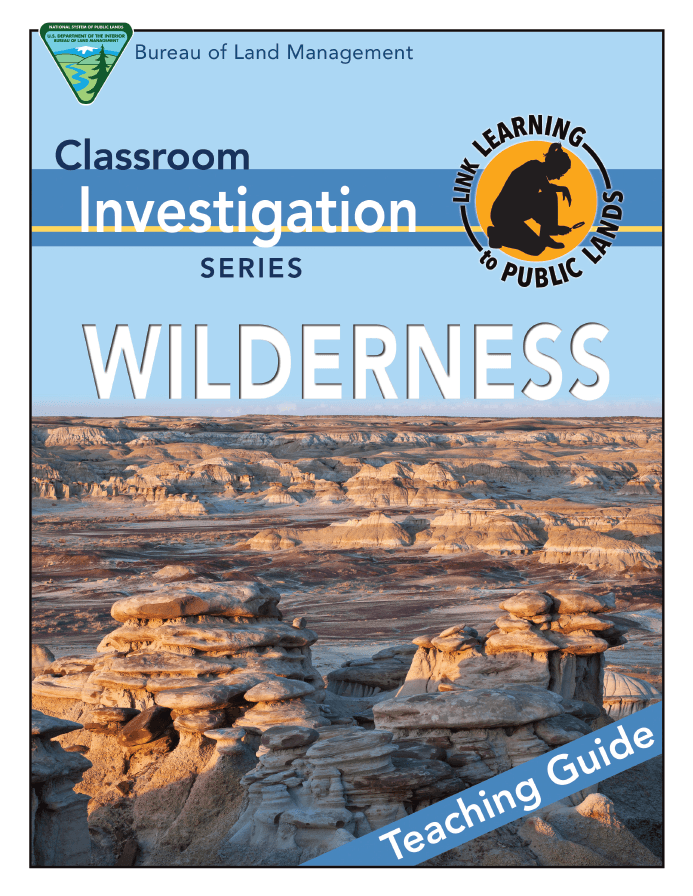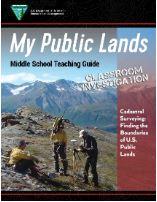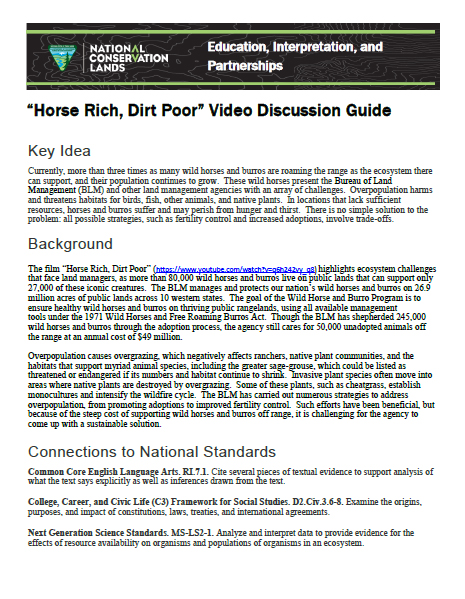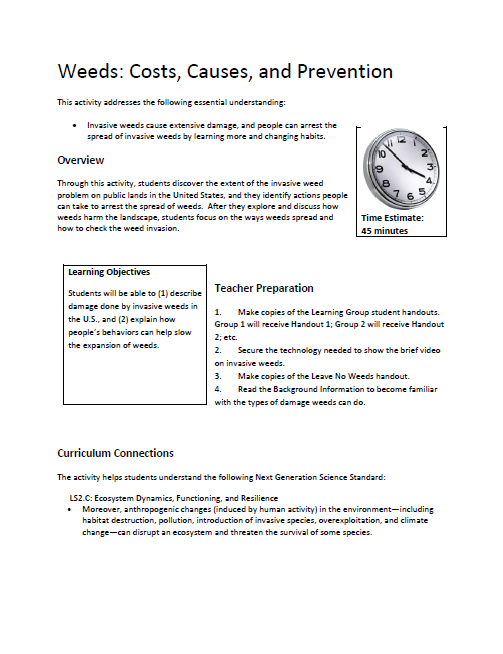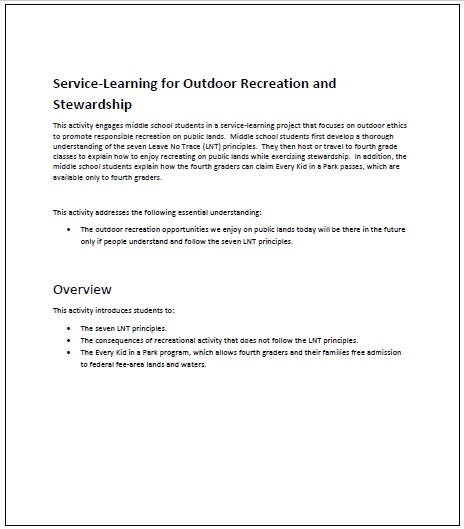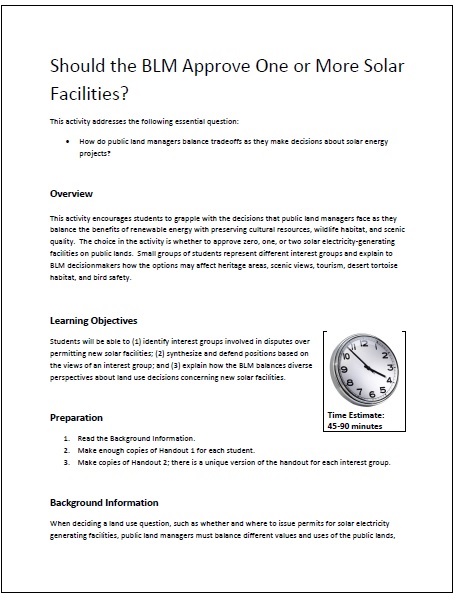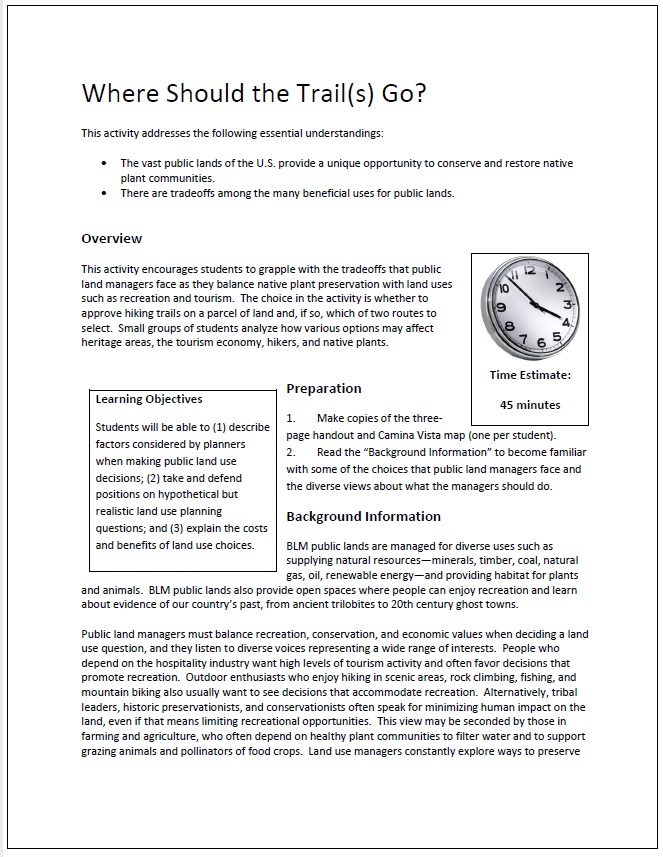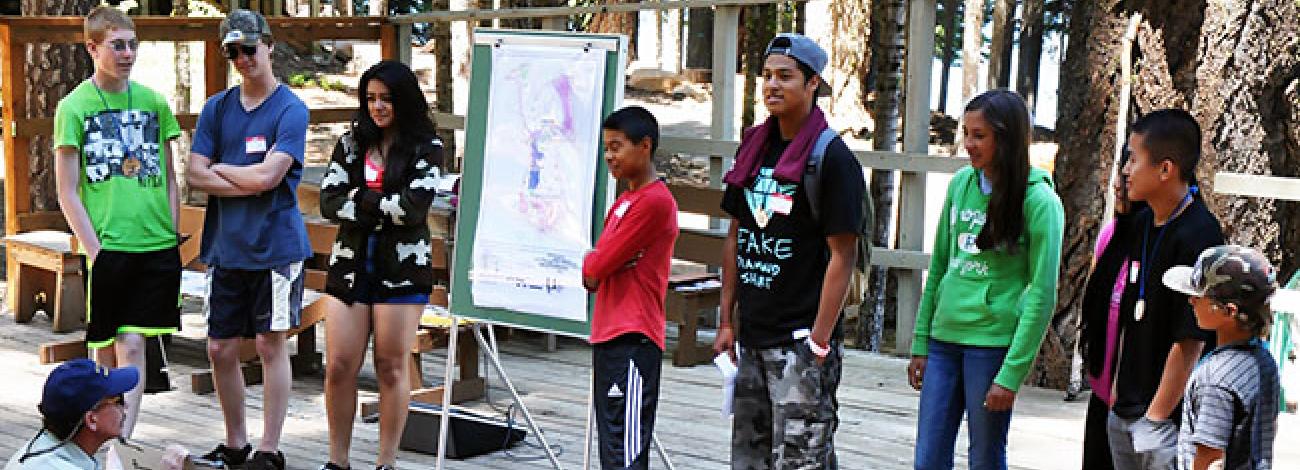
Classroom Investigations
These materials address topics related to the programs and mission of the BLM, and are targeted to learners in secondary schools. Each item in the series presents lessons and activities for teachers to incorporate into classroom instruction. Find these and more educational materials in the BLM Public Room.
Minerals: Essential Ingredients in Your Life
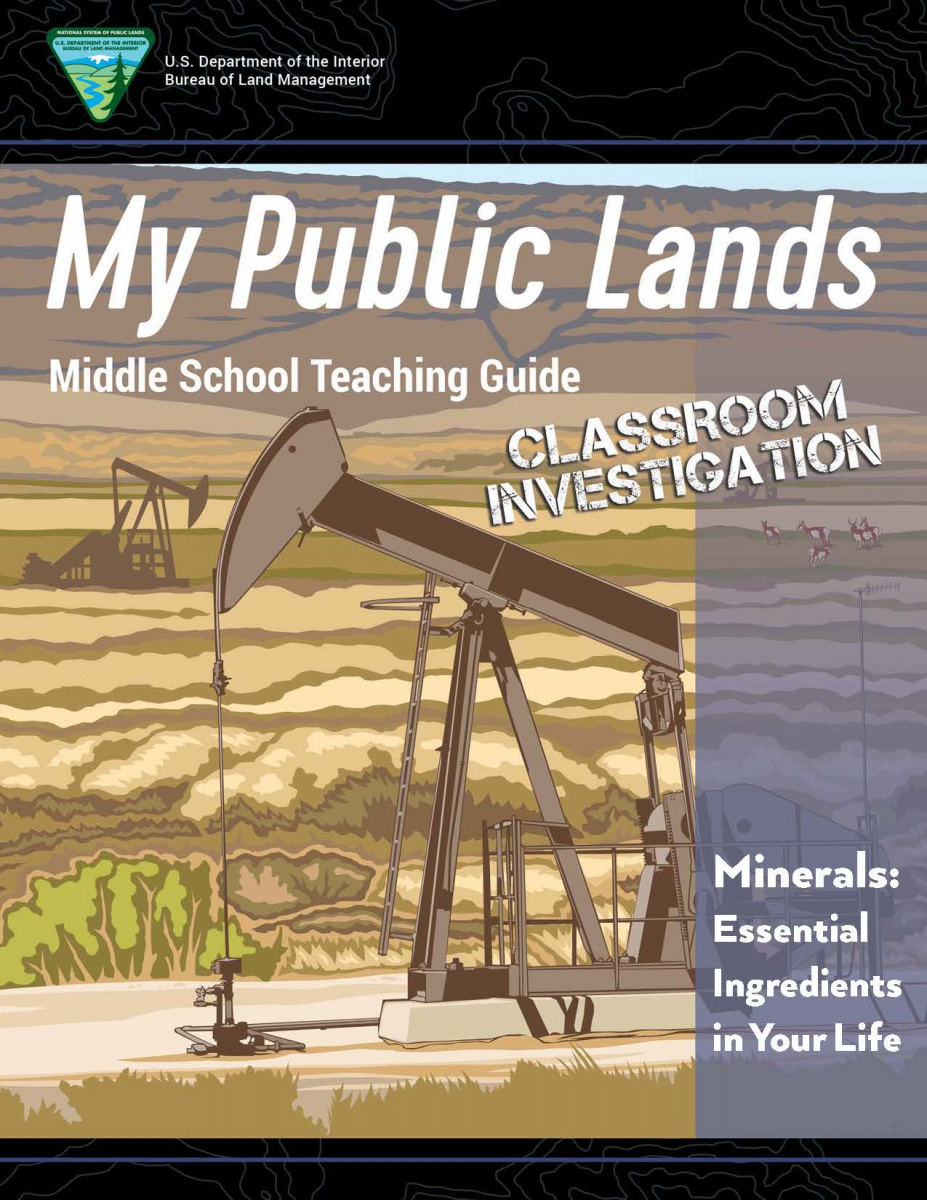 This teaching guide supports the BLM’s effort to educate the public about the importance of minerals from public lands. Students identify minerals used to make everyday products, from personal care items and cell phones, to kitchen tools and hybrid cars. They also explore the mineral cobalt and determine whether it is necessary for the United States to mine it domestically. By weighing the considerations of mining cobalt, students learn how land managers apply the principles of multiple-use and sustained yield.
This teaching guide supports the BLM’s effort to educate the public about the importance of minerals from public lands. Students identify minerals used to make everyday products, from personal care items and cell phones, to kitchen tools and hybrid cars. They also explore the mineral cobalt and determine whether it is necessary for the United States to mine it domestically. By weighing the considerations of mining cobalt, students learn how land managers apply the principles of multiple-use and sustained yield.
Wild and Scenic Rivers
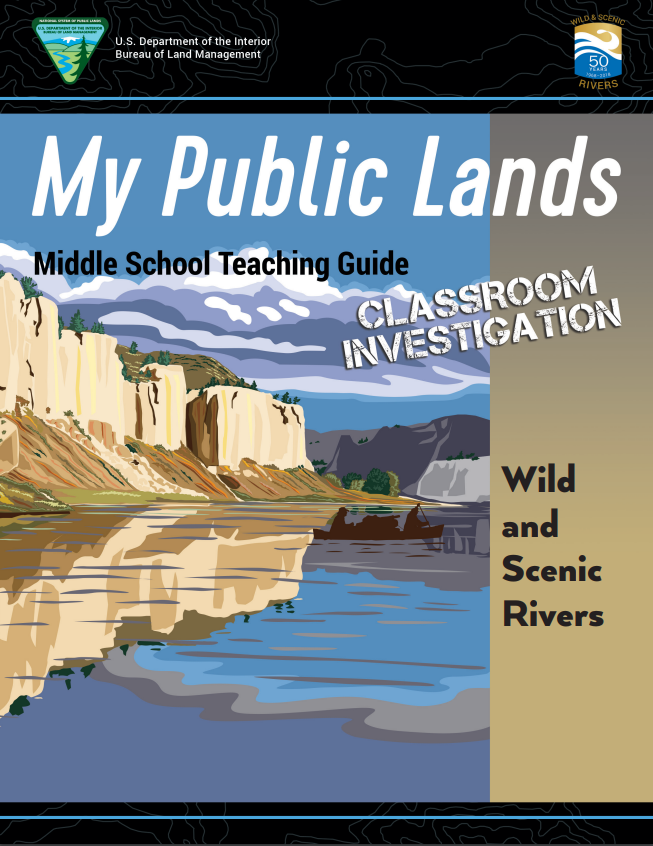 The activities in the teaching guide help students find wild and scenic rivers, explore the history of the passage of the 1968 Wild and Scenic Rivers Act, and develop their own river-inspired poetry. Students use a web-based story map to examine the river values that form the basis for the act, and they navigate an interactive map to find the wild or scenic river nearest to their school. Activities also include reviewing the writings of advocates of the act.
The activities in the teaching guide help students find wild and scenic rivers, explore the history of the passage of the 1968 Wild and Scenic Rivers Act, and develop their own river-inspired poetry. Students use a web-based story map to examine the river values that form the basis for the act, and they navigate an interactive map to find the wild or scenic river nearest to their school. Activities also include reviewing the writings of advocates of the act.
America’s Scenic and Historic Trails
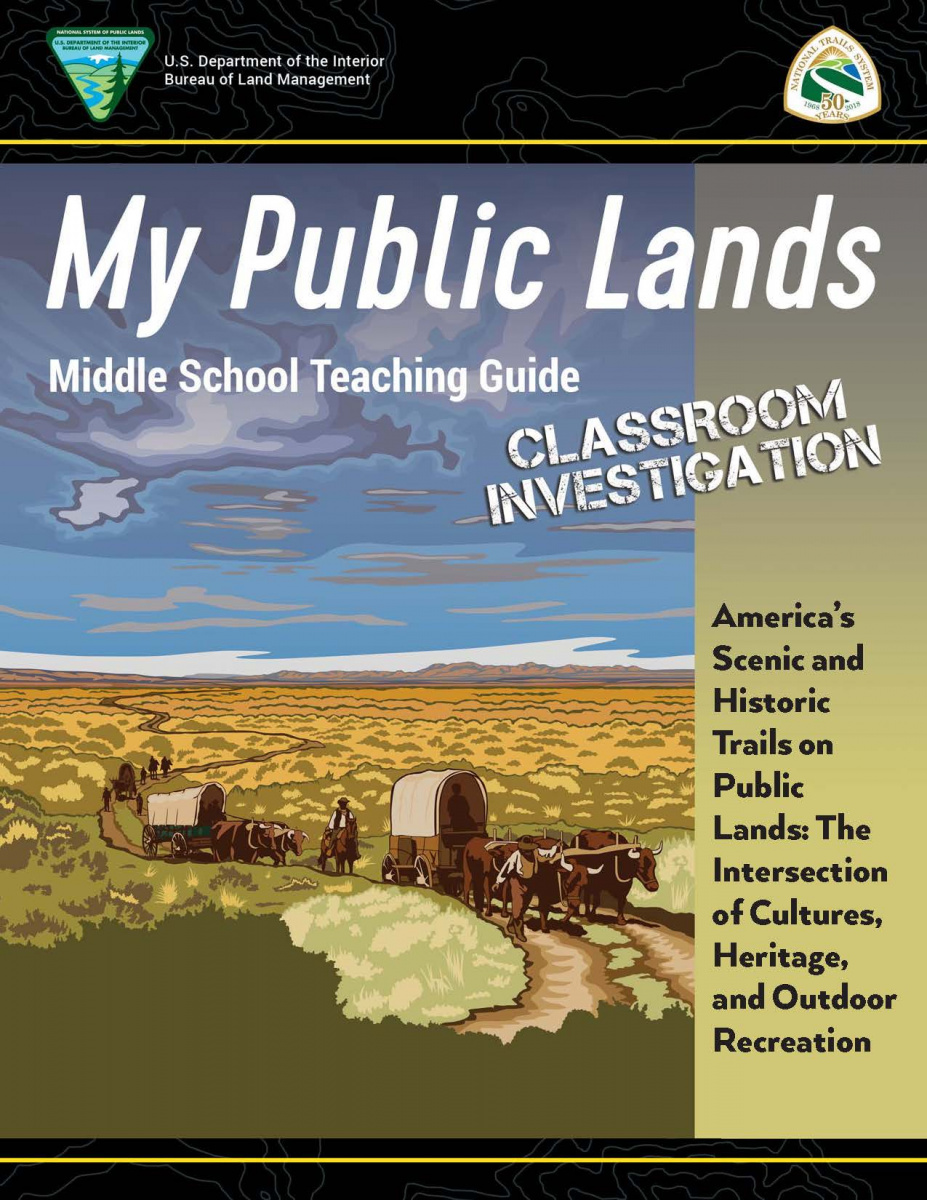 This guide gives middle school teachers activities to explore conflict and collaboration between emigrants and American Indians. Because what are now scenic and historic trails brought many of the emigrants to the west, students begin the unit by identifying where scenic and historic trails are located today. They then parse some of the language in the 1968 law that establishes scenic and historic trails. The teaching guide concludes by presenting excerpts of pioneer diaries with evidence of both cooperation and conflict between the two cultures.
This guide gives middle school teachers activities to explore conflict and collaboration between emigrants and American Indians. Because what are now scenic and historic trails brought many of the emigrants to the west, students begin the unit by identifying where scenic and historic trails are located today. They then parse some of the language in the 1968 law that establishes scenic and historic trails. The teaching guide concludes by presenting excerpts of pioneer diaries with evidence of both cooperation and conflict between the two cultures.
Citizen Voice in Land Use Decisions
Students investigate the history of the BLM’s precursor agency, and they learn how citizens can help influence land use decisions today. Designed for middle school students, this guide can be adapted for high school and upper elementary levels. The activities encourage students to examine the principles of “multiple use and sustained yield,” research segments of the BLM’s historical timeline, and identify ways citizens can participate in the land use planning process. Students engage diverse cognitive skills such as interpreting graphics and assessing various civic action strategies.
Solar Generated Electricity
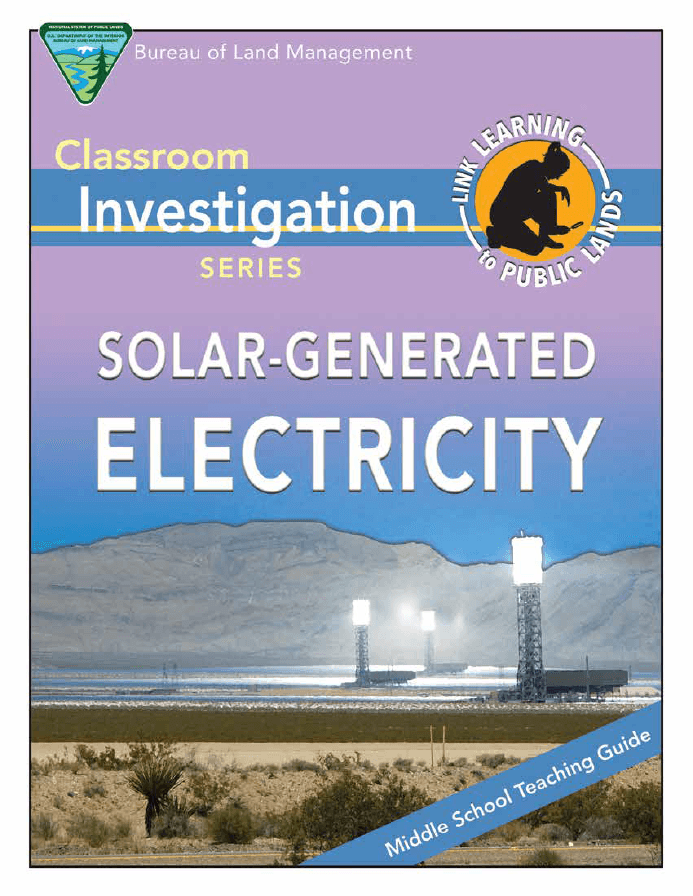 Does the need for carbon-free renewable energy outweigh the potential risks to wildlife habitats, cultural and historical resources, and recreation areas? Middle school teachers can explore this question with their students with this guide. The three-activity unit describes how solar facilities on public lands work, examines the tradeoffs in detail, and illuminates the factors that affect decisions about where to build solar electricity plants.
Does the need for carbon-free renewable energy outweigh the potential risks to wildlife habitats, cultural and historical resources, and recreation areas? Middle school teachers can explore this question with their students with this guide. The three-activity unit describes how solar facilities on public lands work, examines the tradeoffs in detail, and illuminates the factors that affect decisions about where to build solar electricity plants.
Habitats and Wildlife
This middle school guide helps students understand the importance of habitat conservation, how changes to habitats health affect wildlife, and how the BLM monitors and promotes healthy habitats. The four-activity unit concludes with students designing an experiment based on their research of Western wildlife and habitats in the preceding activities. The unit is designed for middle school students, but it can also be adapted for the high school and upper elementary levels. The activities offer students speaking, research, and teaching roles as they progress through the unit.
Native Plants
This teaching guide provides three classroom activities for middle school teachers about the importance of native plants, how these plants are threatened, and how concern for native plants factors into land use decisions. The hands-on exercises explain how native plants affect ecosystem balance, support pollinators, and diversify the food supply. Students also investigate threats to native plants on public lands such as invasive species and wildfire.
Wilderness
The activities in this guide prompt students to discuss what wilderness means to them, how it is defined in the law, and how Howard Zahniser defined it his seminal 1956 article “The Need for Wilderness Areas.” A close analysis of Zahniser’s article is the heart of the activity. Students read key excerpts and draw comparisons among his thoughts about wilderness, how it is described in the law, and their own conceptions of wilderness. Students also describe why some lands are designated as wilderness areas and discuss the kinds of human activities that are prohibited there.
Cadastral Surveying
Through this teaching guide, students will learn how the development of the Public Land Survey System was vital to the establishment of land ownership and government revenue in the early days of the United States. The lessons will introduce students to public domain, the Public Land Survey System, and surveying methods and tools. Students will use surveying techniques to map their classrooms and to practice being a surveyor for a day. They will also complete calculations using measurements from the survey system.

